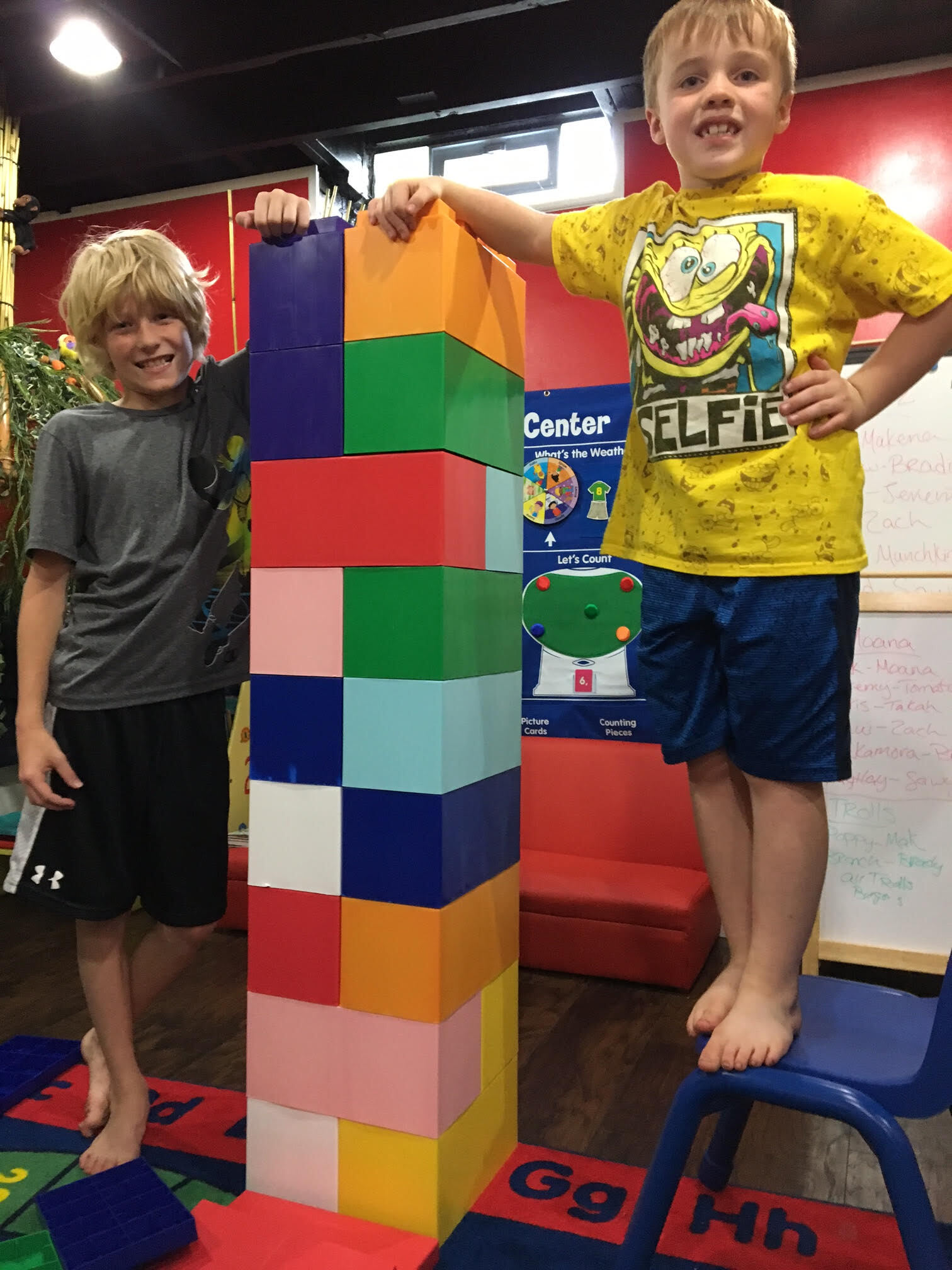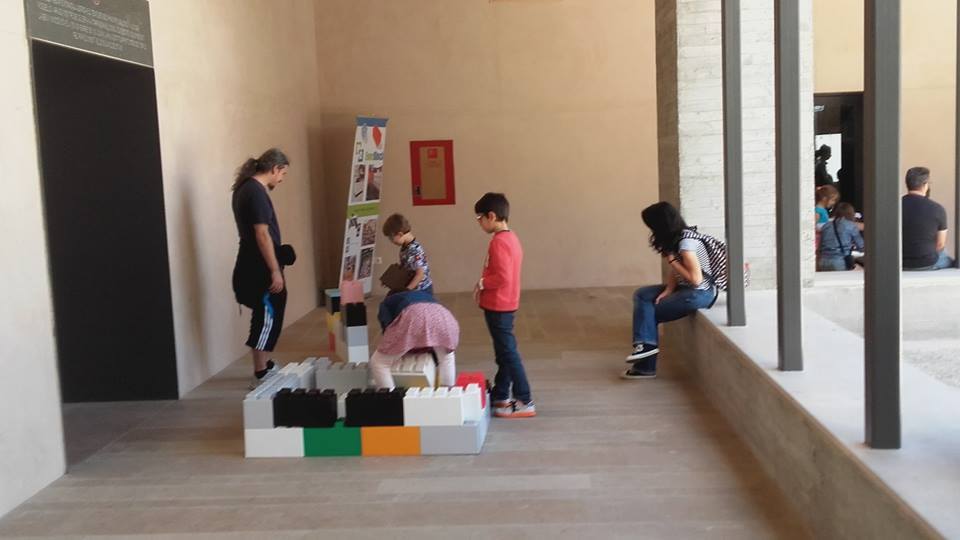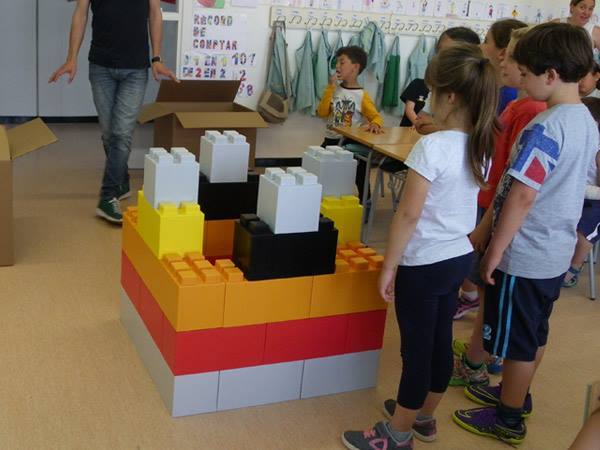4 STEM Building Challenges for Kids Using Modular Blocks
Posted by Kate Murphy on Jun 25th 2025
When it comes to helping kids develop essential problem-solving and critical-thinking skills, few approaches are as effective—or as engaging—as STEM-based building challenges. STEM, which stands for science, technology, engineering, and math, is more than just a curriculum buzzword. It’s a hands-on, active-minded approach that encourages kids to experiment, explore, and make meaningful connections between the real world and the classroom.
Hands-on, play-based activities are a powerful way to bring STEM concepts to life in early education. With modular building blocks like EverBlock®, kids can dive into creative exploration, experimentation, and problem-solving. Below are four exciting STEM building challenges designed to inspire learning and teamwork—perfect for classrooms, camps, after-school programs, or home.

Introducing Children to STEM Through Hands-On Play
For a bit of background information, in the early 2000s, growing concerns about U.S. students falling behind in science, technology, engineering, and math led to renewed emphasis on strengthening K-12 education. Around 2001, Dr. Judith Ramaley of the National Science Foundation helped popularize the term STEM to better promote interdisciplinary learning and 21st-century skills like critical thinking, creativity, and problem-solving.
STEM is a natural part of how young children learn. Every time they ask questions, explore their environment, or try to figure out how something works, they’re engaging with STEM. Early STEM learning thrives in environments where kids can touch, build, and test ideas themselves.
That’s where hands-on play becomes so powerful. When children engage physically with a problem, they internalize concepts naturally. Instead of being told what works, they discover it. And when a structure collapses or an idea doesn’t pan out? That’s just another chance to iterate, improve, and build resilience.
Hands-on STEM play supports a wide range of important developmental skills and benefits for children. These include:
- Encouraging curiosity and creativity
- Building critical thinking and problem-solving skills
- Developing foundational knowledge
- Enhancing collaboration, teamwork, and communication
- Improving fine motor and spatial skills
- Facing challenges and learning from mistakes boosts confidence and resilience, helping children build self-esteem and perseverance
- Preparing for future careers, since STEM fields are becoming increasingly important in today’s workforce
- Connecting learning to the real world by showing children how concepts apply beyond the classroom
Why Modular Blocks Work for STEM Activities
Modular blocks are a fantastic STEM learning tool. They’re simple enough for beginners, yet powerful enough to support increasingly complex designs and challenges.
Here’s why modular blocks, like EverBlock®, work so well in a STEM curriculum:
- Open-Ended and Reconfigurable: Children can build, break down, and rebuild over and over again. This encourages experimentation and resilience when a structure doesn’t work out the first time.
- Promotes Spatial Reasoning and Critical Thinking: To build something that stands, spans, or balances, kids need to visualize outcomes, predict how pieces fit together, and plan ahead—all foundational STEM skills.
- Models Real-World Engineering Concepts: From supporting weight to distributing force, modular blocks mimic the principles behind actual construction, architecture, and design.
EverBlock®’s large-scale modular blocks stand out because they provide a tactile, physical experience with plenty of room for creative exploration. Their easy interlocking system lets even younger kids participate, and their sturdy design supports durable, life-sized creations.
You’ve learned why modular blocks are such effective STEM tools, now you can put them to work for you. Explore four hands-on building challenges that encourage problem-solving, teamwork, and creative thinking.

STEM Block Challenge #1: Bridge Building Bonanza
Goal: Build a bridge that spans a specific gap (e.g., between two tables) and can support a designated amount of weight.
This challenge introduces children to basic civil engineering concepts like force, load, and support systems. It requires thoughtful planning and invites plenty of redesigns.
STEM Concepts:
- Engineering: Explore how different shapes like triangles add strength.
- Math: Measure distances and weights.
- Problem-Solving: Figure out why a bridge fails and how to fix it.
Twists to Try:
- Longest Span: Whose bridge can stretch the farthest without collapsing?
- Strongest Build: Add weight until the bridge breaks—who built the strongest structure?
- Speed Round: Set a timer and see who can build the best bridge under pressure.
STEM Block Challenge #2: Earthquake-Resistant Tower
Goal: Build the tallest freestanding tower that can withstand a simulated earthquake—like a gentle shake of the table or a wobble test.
This challenge taps into real-world civil and structural engineering and introduces the importance of building for both height and stability.
STEM Concepts:
- Civil Engineering: Understand how buildings withstand natural forces.
- Physics: Explore center of gravity and force distribution.
- Trial-and-Error: Learn from what collapses.
Tips:
- Use a shaky surface (like a tray or board) to simulate tremors.
- Encourage wide bases and layered support.
- Talk about how real buildings are constructed in earthquake-prone zones.
- After each test, ask: Why did it fall? What could make it stronger?
STEM Block Challenge #3: Block Relay
Goal: Complete a series of mini-building challenges as part of a high-energy, team-based relay race.
This challenge is perfect for camps, classrooms, or larger groups. It adds an element of excitement while reinforcing quick thinking, communication, and STEM versatility.
STEM Concepts:
- Variety: This challenge covers multiple STEM areas—engineering through building, math through patterns and measurement, technology via planning tasks, and science by observing what works and why.
- Teamwork and Communication: Kids work in teams and pass the block from one station to the next.
- Time Management: Can they build well and build fast?
Station Ideas:
- Tower Station: Build the tallest tower in XX minutes.
- Pattern Station: Recreate a specific block pattern.
- Bridge Station: Span a small gap using only XX blocks.
- Shape Station: Create a cube, pyramid, or other 3D structure.
STEM Block Challenge #4: Cityscape Planner
Goal: Design and build a mini city with functional zones: homes, businesses, parks, roads, and more.
This immersive challenge combines creativity and real-world application, offering a window into architecture, urban design, and even environmental planning.
STEM Concepts:
- Urban Planning: Think about how cities are designed and laid out.
- Geometry: Use shapes to form buildings and other structures.
- Environmental Design: Include parks, paths, and public spaces.
Tips:
- Assign roles: Architect, builder, planner, etc.
- Encourage questions: Where do people live? How do they get around? Where’s the park?
- Include constraints: Limited space? Traffic zones? Budgeted blocks?

Setting the Foundation for STEM Success
By using modular blocks in STEM education, you create a learning environment that’s collaborative, creative, and deeply engaging. These challenges empower kids to think like engineers, work like designers, and experiment like scientists—all while having a blast.
Modular systems like EverBlock® grow with your students, from simple shapes to complex models, adapting to any STEM curriculum. Best of all, kids won’t even realize they’re learning—they’ll be too busy building, testing, and solving.
Ready to bring these STEM challenges to life? Explore EverBlock®’s educational modular systems and start your hands-on learning adventure today.


 Made in the USA
Made in the USA
 Industrial Durability
Industrial Durability
 Limitless Creativity
Limitless Creativity
